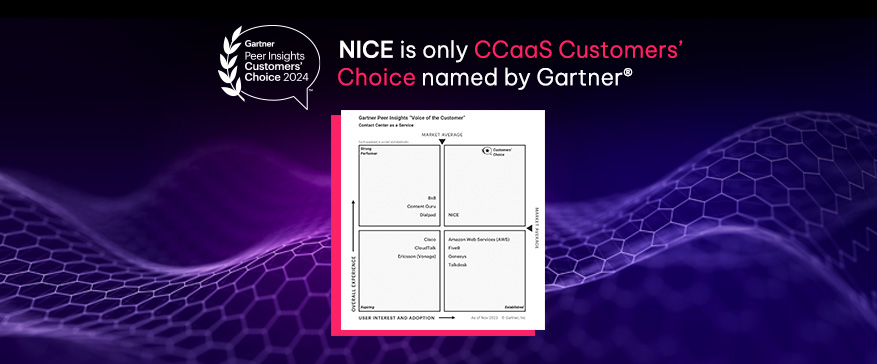What is Emotion Detection?
Emotion detection, also known as emotion recognition, is the process of using technology to identify and interpret human emotions based on verbal cues, facial expressions, voice tone, and other biometric signals. By leveraging artificial intelligence (AI), machine learning, and natural language processing (NLP), emotion detection systems can analyze data to determine how a person feels, enabling more personalized interactions and insights. Businesses are increasingly using emotion detection in customer experience (CX) strategies to better understand customer sentiment and improve engagement.
How Does Emotion Detection Work?
Emotion detection systems rely on advanced algorithms to analyze both verbal and non-verbal communication signals. These signals can include speech patterns, vocal tones, facial movements, body language, and physiological responses. AI-driven systems use this data to classify emotions like happiness, anger, frustration, sadness, and more. By combining AI with techniques like facial recognition, voice analysis, and sentiment analysis, emotion detection technology provides deeper insights into human feelings and behaviors.
For example, emotion detection in voice interactions can capture changes in pitch, tone, and cadence, while facial recognition software analyzes micro-expressions to identify underlying emotions. This analysis helps businesses understand how customers feel during interactions, allowing for better customer service and more meaningful engagements.
Key Features of Emotion Detection:
- Facial Recognition: AI analyzes facial expressions to detect emotions like happiness, anger, or surprise based on changes in facial muscles and movements.
- Voice Analysis: Voice AI detects shifts in tone, volume, and pitch to interpret emotional states such as frustration or excitement.
- Text Sentiment Analysis: Through NLP, systems analyze written communication (e.g., emails, chats) to identify the emotional tone behind the words.
- Real-time Emotion Monitoring: Emotion detection tools work in real-time, allowing businesses to adjust their responses during live customer interactions, such as in customer support calls.
- Multi-Modal Analysis: Some systems use a combination of voice, text, and visual data to provide a comprehensive understanding of the user’s emotions.
Benefits of Emotion Detection:
- Enhanced Customer Experience: By understanding customer emotions in real-time, businesses can offer more empathetic and personalized support, leading to higher customer satisfaction.
- Improved Customer Retention: When companies can detect and address customer frustration or dissatisfaction early, they can take proactive steps to prevent churn and retain customers.
- More Effective Marketing: Emotion detection allows businesses to tailor marketing campaigns based on the emotional responses of their target audience, making messages more impactful.
- Informed Decision-Making: Insights gained from emotion detection can inform strategies across customer service, sales, and marketing, helping companies better meet customer needs.
- Increased Agent Performance: In contact centers, emotion detection can be used to monitor both customer and agent emotions, helping businesses provide better training and support for agents.
Examples of Emotion Detection in Action:
- Customer Support: During a support call, emotion detection can analyze the customer’s voice for signs of frustration. If a high level of dissatisfaction is detected, the system can flag the interaction for escalation or offer additional support to resolve the issue more effectively.
- Healthcare: Emotion detection technology is being used in telemedicine to monitor patients' emotional well-being through facial expressions and voice patterns, helping doctors assess their mental health remotely.
- Market Research: Companies use emotion detection to analyze consumer reactions to ads, products, or services by evaluating facial expressions or social media sentiment, providing real-time feedback on customer preferences.
- E-learning Platforms: Online education platforms can use emotion detection to gauge student engagement and adapt content delivery based on emotional responses, improving learning outcomes.
Industries Leveraging Emotion Detection:
- Customer Service: Businesses use emotion detection to better understand customer satisfaction levels and respond in ways that build stronger relationships.
- Retail: Emotion detection helps retailers analyze customer emotions during in-store or online shopping experiences, allowing for more personalized product recommendations.
- Healthcare: Mental health professionals and telehealth platforms are utilizing emotion detection to assess patient moods and emotional states.
- Entertainment: Media companies use emotion detection to understand audience reactions to content, providing feedback for movie trailers, video games, and advertisements.
- Marketing and Advertising: Brands use emotion detection to assess the emotional impact of their campaigns, allowing them to tweak their messaging to better resonate with their audience.
Challenges and Limitations of Emotion Detection:
- Cultural Differences: Emotions can be expressed differently across cultures, and emotion detection algorithms may struggle to account for these variations.
- Privacy Concerns: Emotion detection systems can collect sensitive data, leading to concerns about how this data is used and protected.
- Accuracy: While AI has made significant advances, emotion detection technology is not always 100% accurate, and misinterpretations of emotions can lead to inappropriate responses.
- Bias in AI Models: If not trained on diverse datasets, AI models for emotion detection may carry biases, which can impact their effectiveness across different demographics.
Future of Emotion Detection:
As AI and machine learning technologies continue to evolve, emotion detection systems are expected to become more accurate and nuanced. Future developments may include improved multi-modal analysis, deeper personalization capabilities, and integration with more advanced virtual assistants. With better contextual understanding, emotion detection will become a critical tool in enhancing user experiences, particularly in customer support, healthcare, and entertainment.
Why Emotion Detection Matters:
Emotion detection technology enables businesses to better understand the emotional states of their customers, leading to more meaningful and empathetic interactions. By leveraging AI to analyze emotions in real time, businesses can deliver tailored responses, address pain points quickly, and foster long-term loyalty. In a world where customer expectations are higher than ever, emotion detection helps companies stay competitive by delivering a deeper level of understanding and personalization.
Conclusion:
Emotion detection is transforming the way businesses engage with customers, providing valuable insights that improve customer service, marketing, and overall user experience. By tapping into the emotional drivers behind customer behaviors, companies can create more authentic, empathetic, and effective interactions, ensuring they meet the needs of their audience in a meaningful way.







